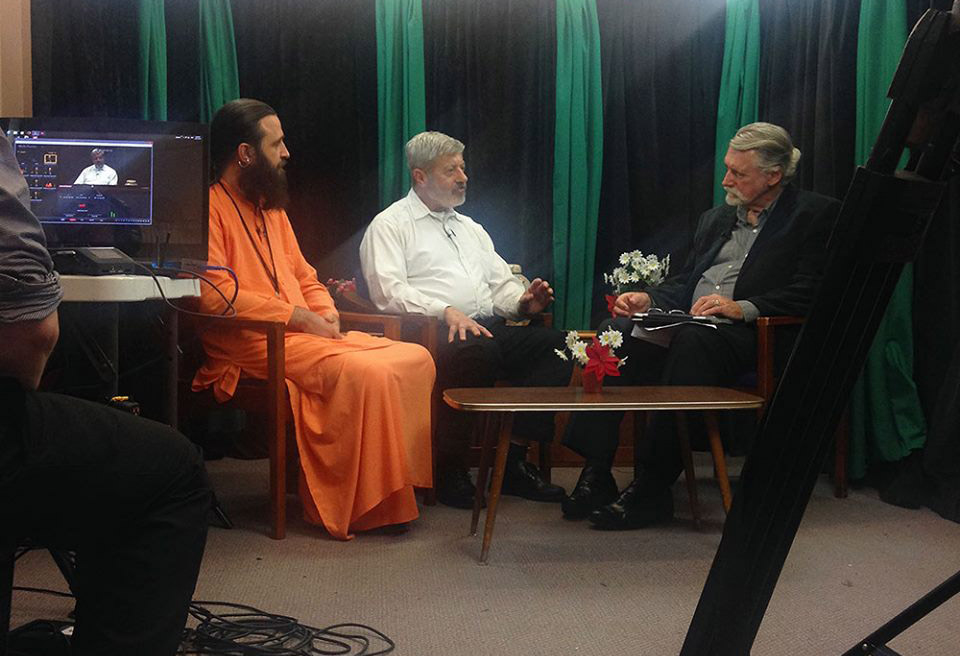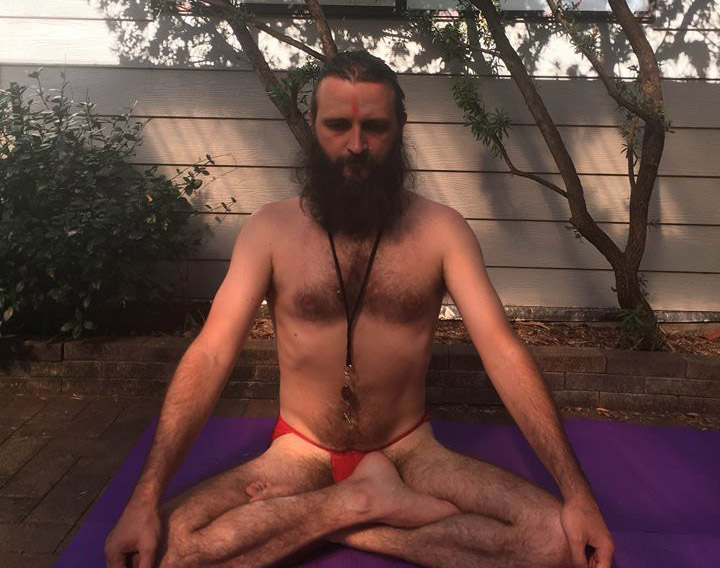Why it is common in India to touch sacred objects and then, after that – your own head or heart? For the most people in the West it is still not clear. Let us address, first of all, the yogic sources. For instance, in the Gheraṇḍa Saṁhitā, in the description of sthūla-dhyana (6. 2-14), there are two techniques of contemplation.
The first technique is a contemplation of the Deity in your own heart, usually it is a heart chakra with eight petals, located according to the eight directions (cardinal and inter-cardinal) where east in us is located in front of us. There are various descriptions of that technique, where different Deities are contemplated in the heart, there are various features of eight petals, and in some cases it is recommended to submerge into nāda e.t.c.
Another technique, described in the Gheraṇḍa Saṁhitā is Guru-chakra, which is located above ājñā-chakra and at the base of sahasrāra-chakra. Sometimes it is considered as a part of sahasrāra, that is why they are often identified as the same phenomenon. This chakra consists of twelve petals with each akṣara having a special meaning, this is navātma-mantra. Navātma-mantra includes in itself main elements (tattvas) of the Universe (brahmanda). That is a very common form of dhyana, where it is recommended to meditate on Guru, who is identified as Śiva.
Actually, the practise is considered a secret, although it may seem simple to someone. But, in our age of information, there is no more secrets after the rise of the Internet. Today we have a different kind of problem – sincerity. That is why, I think, having exclusive knowledge without śuddha-bhakti will get benefits for no one. And for those who are devoted to the true Guru and Deity, the Truth will be revealed by itself.
So what are these two areas, the head and the heart? In a tantric pūjā these are two places, connected with the invocation of a Deity in yourself, in your heart, where the Deity through the upper dvādaśānta should descent from sahasrāra–chakra to the heart. After that, using your breath, you ‘relocate the Deity’ into a flower, which is then placed in your palms. That is being done with the dvādaśānta, which is located in front of your nose. We know that there is inner dvādaśānta, through which prāṇa is absorbed with the inhale into our heart. There is also external dvādaśānta, when we are exhaling and the flow goes outwards. Practises of these dvādaśāntas can be found, for example, in the Vijñāna-bhairava-tantra. In such texts as Siddha-siddhānta-paddhati, Advaya-tāraka-upaniṣad, the Maṇḍalabrāhmaṇopaniṣad, external dvādaśānta is described as bahir-lakṣya (an external object of contemplation). In a tantric pūjā, that bahir-lakṣya is used for āvāhana – the invocation and the spreading of the Deity outside and placing it in mūrti, yantra e.t.c. Also, these elements are used during the completion of a pūjā (worship), when we ‘absorb the Deity’ inside ourselves into the heart and it is going back to the head area, beyond the body. Respectively, these areas are the most important places of perception, and everything starts and ends with them. The same centres are used by nātha–yogis when they are performing śāmbhavī or nādi-pūjā, when while squatting they make a bow and bent their upper bodies. It is possible that many people who are touching sacred places, feet of saints e.t.c. are doing so automatically, without consideration of what is it about. Nevertheless, your Guru-chakra is your temple, your heart is your temple, your palms are your temple and all external objects in which everything is invoked is also your temple. As for the lower centres, the areas of mūlādhāra, svādhiṣṭhāna e.t.c. – these are worshipped in kaula-, aghora-mārga and are not for the ‘open pūjās’. Although the descent of Śakti from sahasrāra–chakra downwards to mūlādhāra or the ascent backwards is also a subject of internal yogic practises. Sometimes the internal yogic processes could be a part of external pūjās, complementing each other. But in which cases, what and how to use it – these things are always better to learn from your Guru, as it is not possible to transmit everything openly and publicly.








